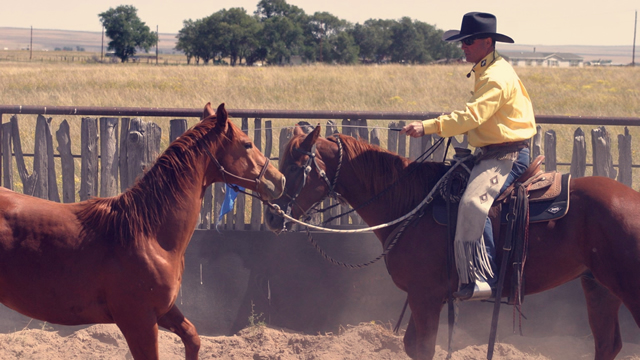Written by Martin Black
This article originally appeared in Eclectic Horseman Issue No.28
When a horse is confronted by something unknown to his senses he deals with it in one of two ways: defensively if he feels confined, or if he does not perceive a threat and his attention is maintained, his curiosity provokes him to investigate.
The horse’s first choice of defense is flight, and if he feels prohibited to exercise flight, then he will fight. When a horse defensively kicks, strikes, bites, or bucks, it’s important for us to understand he does not perceive enough safe space, or gaining that needed space in an appropriate amount of time is not an option to him. If this uncertainty escalates to the point of panic, then he is past the point of reason. His actions are only reflexes, without any mental processing of various options, only the quickest escape.
The next time he is confronted with a similar situation he will draw on what he sees as the success or survival of past experiences and follow the pattern established from those past experiences.
If we can eliminate the threat the horse senses and allow and encourage the horse to exercise his curiosity, the outcome will be a more positive lasting experience for him. He is interested in analyzing various possibilities. He will take whatever time is necessary to satisfy each thought or possibility, then proceed to the next idea and maybe come back to revisit an earlier idea. When the horse is allowed to thoroughly process his ideas, the next time he is confronted with the same or similar experience, he will have the confidence and satisfaction from the good experience from the past. We may not eliminate the element of surprise, but we can help redirect the path of the horse’s reaction. The opportunity for him to develop his self-confidence from past experiences is what develops a brave and courageous horse.
Not developing his self-confidence or, worse yet, developing a lack of confidence, will produce a coward that wants to shy from everything. Courage can actually be developed by not pressuring a horse when his focus is on the unfamiliar object. If the horse is positioned where both eyes can view the object and both ears are up, his full attention is on the object and it is important he doesn’t feel any increase in pressure or he will relate or blame the object for the discomfort.
When as much as one ear comes back, the pressure needs to increase, and if the horse turns to leave, pressure him to turn toward the object and relax all pressure when his ears come forward again. The horse can be unsure of something and learn that watching it is safer then turning his tail and trying to leave.
The less confined the horse feels, the more confidence he will have to engage his curiosity. If the object is below eye level the horse will want to lower his head to maximize it’s perception. It is very important when the horse’s head starts down that he doesn’t feel any restriction from the reins or pressure from the legs pushing him toward his fear.
If he does not feel free to evaluate things in his way, the uncertainty will remain. Keep him focused, but give him all the time he wants to investigate.
This article originally appeared in Eclectic Horseman Issue No.28


